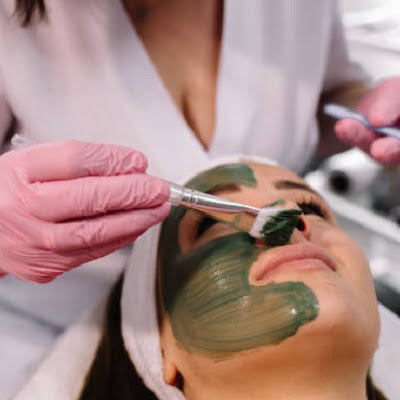Skin stretch marks are referred to as striate or conditions that occur as a result of the skin’s ability to expand and stretch in response to many factors including weight fluctuation, growth, pregnancy, or development of muscle mass. Older linear structures at the skin’s surface sometimes appear as calm, multicolored formations, ranging from red/purple to white/silver. Chemical peels are among the treatments that people use in their endeavor to erase their looks, and the following are some of them. But can a chemical peel reduce stretch marks? Read the blog to know the details.
Understanding Chemical Peels:
Specialized treatment procedures involve the use of chemical peels solutions to cause the removal of the layers of the epidermis. This step assists in peeling off the outermost layer to pave the way for new, healthy skin.
Superficial Peels:
These are light peels that involve the usage of AHAs such as glycolic acid or BHAs such as salicylic acid. They work at the epidermis level and are ideal to be used to correct small blemishes on the surface.
Medium Peels:
These use stronger acids such as TCA to enhance the penetration into the skin layer than the layer used by the former. Medium peels can also help in treating such problems as fine lines, wrinkles, and mild to moderate stretch marks.
Deep Peels:
Phenol is one such substance and it goes deeper into the skin than others, giving far-reaching results. They are usually applied on serious conditions such as deep folds, acne scars, and severe striate or stretch marks.
How Chemical Peels Work on Stretch Marks
Stretch marks refer to the inability to stretch or extend further than it is capable of, resulting in rips along the collagen as well as the elastin fibers. Consequently, the epidermis healed while forming the marks that are apparent as the stretch marks. Chemical peels can help with stretch marks by
Stimulating Collagen Production: Chemical peels stimulate collagen synthesis in the skin as a result of the wound healing process which is inducted. The collagen assists in the texture and elasticity of the skin thus reducing the stretch mark appearance as time passes.
Exfoliating the Skin: Chemical peels work by eliminating the outer layer that has discoloration hence being useful in the aspect of stretch marks. The treatments can make the skin to be homogeneous and increase the skin’s surface smoothness.
Enhancing Skin Regeneration: Chemical peels work to enhance the skin’s rate of natural regeneration so that new healthier epidermis cells form. This is useful in the sense that stretch marks begin to ‘dim’ out in the procedure of a given duration.
Effectiveness of Chemical Peels for Stretch Marks:
The success of chemical peeling for the treatment of stretch marks depends on the extent and age of the stretch mark.
New vs Old Stretch Marks: When performed, chemical peels can be very effective, especially for the newer stretch marks, those with red or purple color in comparison to the older, white ones. The newer marks require less collagen stimulation and skin regeneration as compared to the older marks.
Combination Treatments: Although chemical peels are very effective, they can also be done together with other procedures such as microneedling, laser therapy, and with the use of topical retinoids.
Multiple Sessions Required: Another professional treatment that can effectively help to reduce the severity of stretch marks is chemical peels; A healthcare professional usually prescribes a course of 3 to 6 peels with intervals between them, spanning several weeks.
Are Chemical Peels Safe for Stretch Marks?
An experienced Aesthetic physician undertakes chemical peels effectively. Nonetheless, Botox comes with certain risks and even potential aftereffects, which include redness and peeling, irritation, scarring, or infection. Get in touch with an aesthetician to evaluate your skin type. Also, the conditions you will have before prescribing the best treatment for you.
Conclusion:
Chemical peels can be of help in the treatment of stretch marks though its effectiveness. It depends on several factors like the type, depth of the peel, and the age of the stretch marks. To achieve better outcomes, visit SKN Cosmetics to learn more about chemical peels specifically for stretch marks, you can seek out a dermatologist or a professional who specializes in skin care to get information on how you can do it depending on the specific circumstances of your situation. Both medical conditions also produce uneven skin tone and complexion; however, with follow-up care and the correct treatment, the skin prognosis can be improved.



